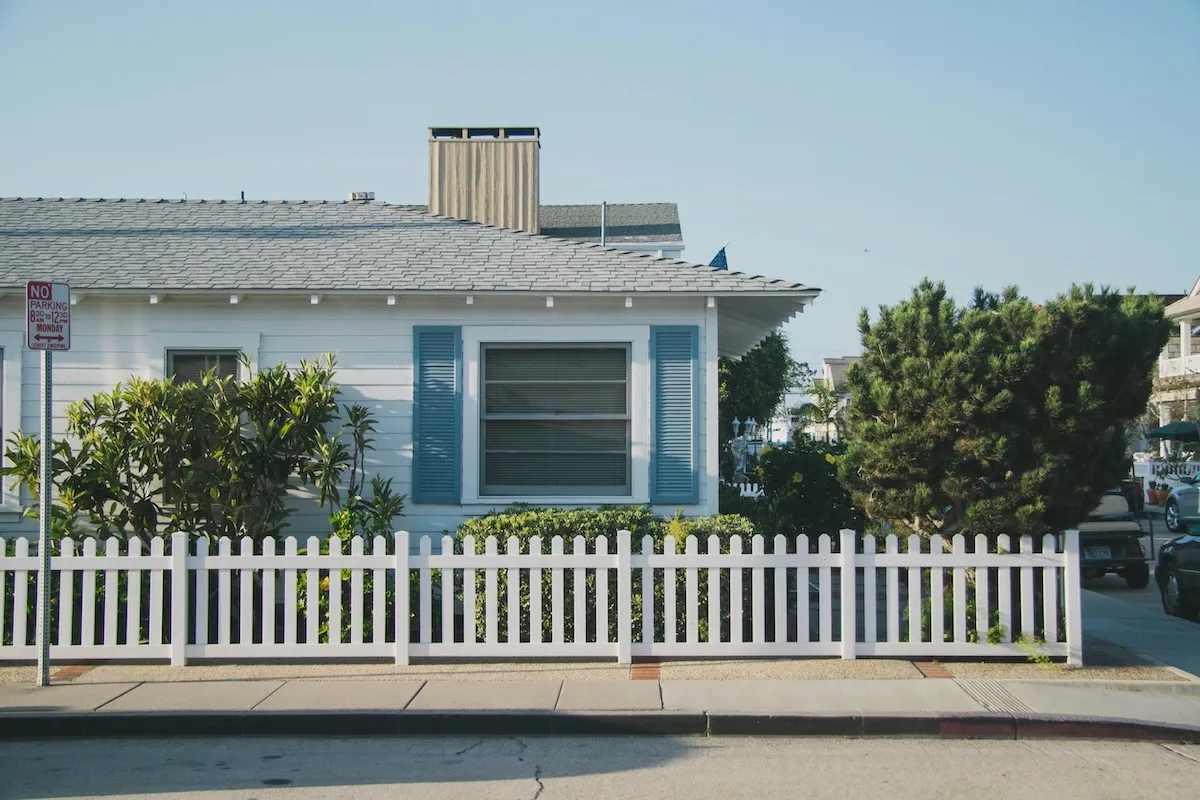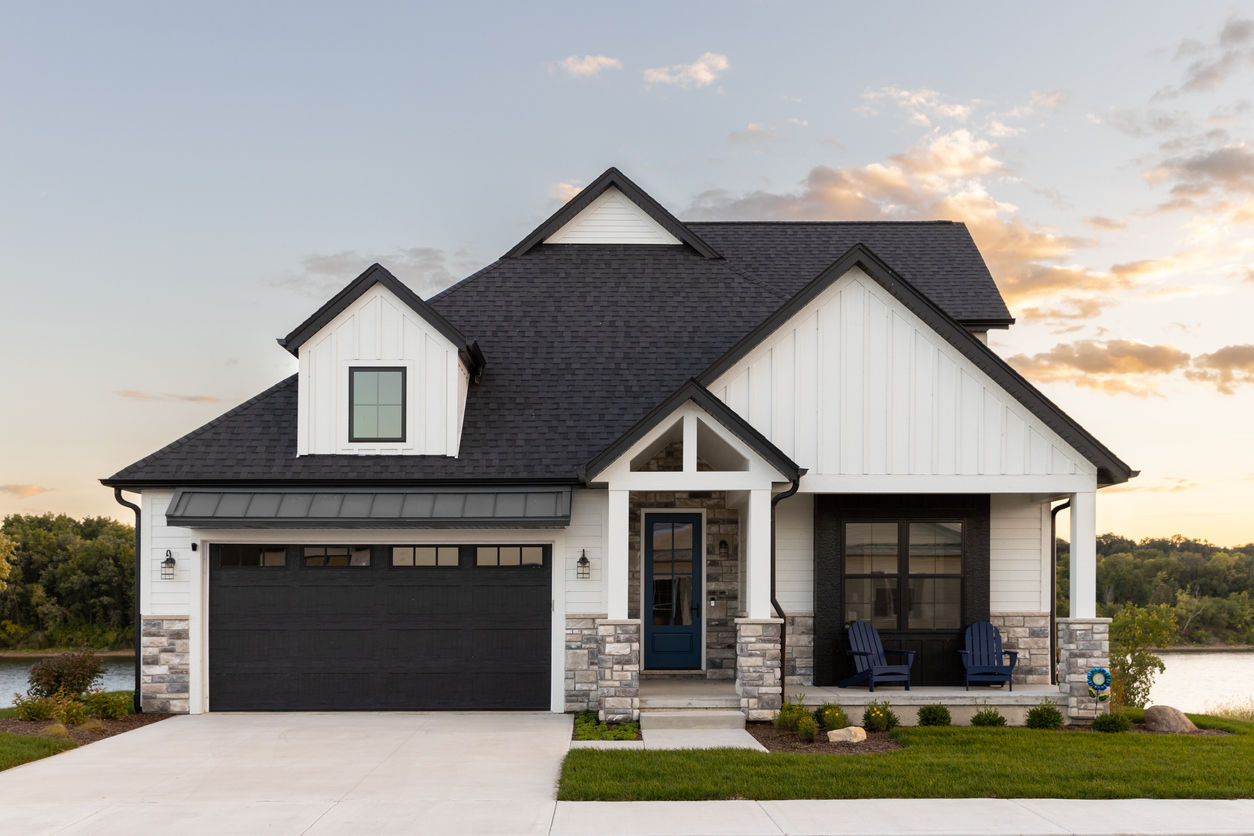How Much Value Does an Additional Bathroom Add to a House?
Are you considering adding a bathroom to your home and wondering, “How much value does an extra bathroom add?” Or perhaps you are weighing up the value of one listing with another and deciding how much value an extra bathroom adds to a property?
There’s no definitive answer, as the precise value increase depends on various property-specific details. The type of home itself, its location within a given area, overall size, bedroom count, and buyers’ priorities in that local market all shape the impact of a bathroom.
If you’re thinking of adding a bathroom, or spending a little more on a home with more bathrooms than another, you should get to know how bathrooms contribute to a property’s overall price. In this article, we break down how much value a bathroom can add to a home.
The Financial Benefits of Adding an Extra Bathroom
What kind of return can you expect from adding a bathroom? Adding a bathroom is a costly venture. It requires plumbing, electrical, tiling, expensive fixtures, and, of course, permits.
According to the Remodeling Magazine Cost vs. Value report, a midrange bathroom addition costs about $57,000. However, those costs can quickly increase depending on the area’s labor costs, the size and location of the addition, and the chosen finishes. The same report states that a high-end bathroom addition costs over $100,000.
So, after all those expenses, what’s the ROI on adding a bathroom? According to Remodeling Magazine, homeowners can expect to recoup about 30% of the renovation cost. In comparison, a midrange bath remodel returns about 66% of the costs. The higher ROI is usually a result of lower costs, given the space was already permitted with existing plumbing and electrical.
The value a bathroom adds depends on the house itself and its location. For example, if you add a second bathroom to a home with only one bathroom, the ROI on that project might be considerably higher than if you were adding a third or fourth bathroom to a home.
Adding a bathroom can increase a home’s value by 10-30%. An extra bathroom appeals to today’s buyers, particularly growing families. Listings with more bathrooms sell quicker and for higher prices in many markets.
Whether you add a powder room or spacious master ensuite, an extra bathroom delivers excellent resale value. It also enhances daily life, giving household members the privacy they crave.
The Difference Between a Half Bath and Full Bathroom Addition
When deciding on bathroom additions, most homeowners choose between a half and full bath. The right choice depends on your space, budget, and needs.
A half bath, or powder room, contains just a toilet and sink. Many homes have them for use by short-term guests, as half the bathroom does not have any bathing facilities (shower or tub).
Half baths are usually smaller in size, typically around 20 square feet. A half bathroom is a convenient home feature as it provides a restroom for guests without needing to access the household’s private bathrooms.
On the other hand, a full bathroom includes a toilet, sink, bathtub, and/or shower. Full baths are larger, generally 40-50 square feet, to accommodate the extra fixtures. A master bath or a home’s main bathroom is usually a full bath.
Half baths are less expensive additions than full bathrooms. They can be a good investment, improving the home’s livability and having an estimated ROI of 60%.
The Value of a 3/4 Bathroom Addition
If you’re looking for a bathroom addition that doesn’t take up a ton of space but still packs a functional punch, consider the practical yet powerful 3/4 bath.
A 3/4 bath is a small bathroom with a sink, toilet, and shower (but no tub). These bathrooms are a nice compromise, offering more functionality than a half bath but taking up less space than a full bath.
3/4 bathrooms can be a smart addition for several reasons:
- Provide showering facilities while taking up less space than a full bath
- Allow for accessible shower designs that are not possible with a combined tub/shower.
- Flexible for future modifications like adding a freestanding tub.
- Efficient use of space in small homes, condos, or as a second bath.
For buyers who don’t require a soaking tub and want to be conservative with space, a 3/4 bath can provide all the necessities in a smaller footprint. The shower-only design also allows for walk-in showers and other accessible configurations.
In most home sales, the ROI impact on the resale value of a 3/4 bathroom is the same as a full bath, especially if there’s already an existing bathroom in the home that features a bathtub.
Cost Estimates for Bathroom Additions
Adding extra bathrooms is a top priority for many homeowners, particularly if they only have one bathroom. Accurately estimating costs is essential to set realistic expectations. Let’s break down the key factors.
How much you need to spend to add a bathroom depends on your home’s layout, your chosen finishes, and the labor market you live in.
Converting existing space to a bathroom typically runs $5,000-$40,000, while building an entire addition can cost $20,000-$100,000+.
Like any renovation, variables like bathroom type, size, location, and finishes significantly impact your budget. Architectural Digest states that converting space under a staircase into a small half-bathroom is one of the most affordable bathroom additions, costing about $7,5000.
If you’re considering building an entirely new addition, your budget must be far higher. Furthermore, the size of the bathroom size matters. More square footage means more materials, fixtures, and labor.
Labor costs to consider include:
- Carpenter: $20-$50 per hour
- Plumber: $45-200 per hour
- Electrician: $50-100 per hour
- Flooring Contractor: $20-29 per hour or $7.50 per square foot
- Drywall Contractor: $50-100
- Tiler: $30-120
- General Contractor: 10-20% of the project’s total cost.
- Bathroom permit: $200-1,000
It’s important to remember that these costs do not include the costs of materials, which can vary far more than the cost of labor. For example, you can purchase a $1,000 bathtub or a $10,000 one.
Select materials that are aesthetically pleasing, affordable, and durable to keep costs to a minimum and have a higher return on your investment. Avoid luxury materials like custom cabinets, corian marble, or high-end fixtures if budget is a concern.
Full Bathroom Addition Cost
A full bathroom contains a sink, toilet, bathtub and shower. Most guest bathrooms and ensuites fall into this category, though primary bathrooms tend to be more spacious and better equipped.
The average size of a full bathroom addition is 35 to 50 square feet. Building a full bathroom addition from scratch can cost $15,000 to $60,000 or more.
Half Bath Addition Cost
A half bath, or powder room, has only a toilet and sink. These smaller bathrooms take up around 18 to 20 square feet on average. However, an affordable conversion of an existing space to a half bath runs $5,000 to $15,000. If you’re building an entirely new addition, plan to spend $10,000 to $30,000. Half baths need less plumbing and materials, making them one of the more affordable bathroom additions.
3/4 Bathroom Addition Cost
A 3/4 bathroom gives the benefit of a full bath but usually with a slightly lower footprint and cost. You can expect to spend $10,000 to $20,000 to convert existing space into a three-quarter bathroom. Building a new addition for a three-quarter bath will cost a minimum of $15,000.
Conversion Vs. Extension
One of the biggest factors determining your bathroom addition cost is whether you’re converting an existing space or building an entirely new extension.
Utilizing unused areas like a basement, attic, or garage is often the most budget-friendly route. By finishing an existing space, you avoid the expenses of changing your roofline or extending your foundation. Remember that you’ll still need plumbing, electrical, and HVAC systems. Expect $15,000 to $65,000 to convert existing space, depending on size and scope.
Building a new bathroom addition costs more. You’ll likely need foundation work, new walls and roof framing, to extend HVAC systems, exterior siding, and windows, on top of finishing the new interior. Plan for at least $20,000 for even a very modest bathroom addition. Large, luxurious additions can easily exceed $90,000.
Both of these bathroom additions will benefit your home’s resale value. The best way to know how much value a bathroom will add to your home is to consult a real estate agent. An agent can do a comparative market analysis and provide you with recent sales of homes similar to yours that feature an extra bathroom.
With FastExpert, you can connect with an experienced agent who understands your market. Ask them for feedback on your home renovation and their opinion on where to invest your money to increase your home’s value the most.
Finishes Will Make or Break Your Budget
If you want to create a luxurious new bathroom, you might dream of adding high-cost tiling, fixtures, and stonework, but these design choices can also blow your budget.
A modest bathroom redo with basic finishes like ceramic tile and acrylic shower walls may cost around $15,000. But if you opt for high-end tile, custom cabinetry, stone countertops, and other luxuries, don’t be surprised when your quote comes in at $40,000 or more.
For example, marble countertops cost $75-250 per square foot, while travertine can be a more affordable but equally beautiful option at $50-100. Specialty items like a walk-in shower or jetted tub also increase costs.
Before falling in love with a design plan, accurately estimate costs and the impact on resale value. Consider all the variables to determine if your budget aligns with your goals. And remember, you can always splurge on some finishes, like light fixtures, at a later date, which can help you stick to your budget today while achieving the luxury look you desire over time.
How to Maximize the Value of an Extra Bathroom
While adding an extra bathroom costs money upfront, it also increases your home’s value. If designed well and in a house that needs the space, a new bathroom can potentially pay for itself when you sell the property.
An average bathroom addition increases your home’s value by $20,000 to $50,000. But you have to build it right to maximize the potential value boost.
Create a Functional Layout
When planning your bathroom layout, focus on creating a highly functional space that meets modern needs.
Consider how the space will be used, ideal fixture placement, storage, ventilation, and adequate clearances. A well-designed, easy-to-navigate floor plan ensures the space is attractive to future buyers, therefore adding value.
Choose Aesthetic and Durable Materials
When designing a bathroom that adds value to your home, select finishes and materials that combine aesthetics with functionality. The right selections will ensure that your bathroom looks great and is practical and durable.
Here are some tips for homebuyers who are selecting materials for their bathroom renovation:
- Countertops: Avoid easily stained materials like corian marble. Instead, use durable materials like quartz, granite, or high-end laminates. Natural stone countertops offer luxury but require sealing to prevent damage.
- Cabinetry: Choose cabinets made from materials that resist humidity, such as plywood, solid wood, or thermofoil, instead of particleboard.
- Flooring: Use water-resistant and aesthetically pleasing options like porcelain or ceramic tile, natural stone, or high-quality vinyl.
- Walls: Use exterior water-resistant paint or durable ceramic, glass, or porcelain tiles to ensure easy cleaning and longevity.
- Fixtures and Lighting: Select corrosion-resistant finishes such as chrome, stainless steel, or ceramic for fixtures. Avoid brass, as it tarnishes quickly. For lighting, invest in moisture-resistant and stylish options with dimming capabilities.
A bathroom addition or home improvement project can be a great way to add value to your property, but expensive materials don’t necessarily lead to a higher resale value.
Reduce costs by sticking to materials that work within your budget. Select durable materials that match the existing design of your home.
Add Extra Features
A bathroom can be so much more than a shower and toilet. Extra thought and creative features can turn a small space into a true retreat. Consider including heated flooring, an oversized walk-in shower, a soaking tub, a towel warmer, dimmable lighting, Bluetooth speaker ventilation fans, or energy-efficient fixtures. While some of these might sound expensive, plenty of affordable options are usually available.
If you have extra space, consider features that home buyers want. According to a survey by the National Association of Home Builders, the four most-wanted bathroom features are all related to the home’s primary or master bath. At the very top of the list are a:
- Linen closet in the primary bath, rated as essential or desirable by 76% of home buyers.
- Shower stall and separate tub, desired by 74% of buyers
- Double vanity, sought after by 69%
- Private water closet, rated essential by 67%
The shower and tub combination in the primary bath ranked as the most “essential” feature, with 36% of buyers stating they would unlikely buy a home without this feature.
Whether you’re looking to sell your home immediately or not, if a bathroom renovation is in your future, you may want to consider these features that home buyers want in a primary bathroom:
- A neutral ambiance with natural elements and tranquil lighting.
- Luxury oversized showers with multiple showerheads, a bench, and frameless glass.
- Freestanding soaking tubs over built-in jetted alternatives.
- Heated floors that add comfort and a “wow” factor.
- Custom dimmable lighting.
Include Storage Space
One of the most desired features in bathrooms is plentiful storage space. Incorporate cabinetry for toiletries and medicines, shelving in the shower and bath areas, and under-sink storage for cleaning essentials. Maximize every inch.
One of the biggest mistakes homeowners make when designing a bathroom is overlooking the need for storage. As a result, even the most stylish spaces look messy due to toiletries and personal items not having a proper home.
Don’t Over Upgrade
It’s important not to over-upgrade beyond the other spaces in your home or the nearby comparables. For example, you don’t want to add a $100,000 primary bathroom to a house worth only $400,000 (unless you have extensive future renovation plans).
Alternatively, you don’t want to add upgrades that exceed the neighborhood it’s located in, as you won’t have as positive an impact on the home’s value as you would like.
Focus on creating a space aligned with what buyers are looking for, other comparable homes, and your house’s worth. Timeless neutral colors have the widest appeal. With strategic design choices, the money spent on renovating or adding a bathroom should ultimately increase your home’s value.
Plan Your Bathroom Addition for Maximum ROI
Adding a bathroom to your home is a major project, but it can be a worthwhile investment. With careful planning and strategic design choices, your new bathroom can pay dividends by increasing your home’s resale value.
Balance your investment cost with the potential return when you eventually sell. Focus on features and finishes that appeal to buyers rather than overly personalized luxuries. While the upfront costs of a bathroom addition are substantial, you can potentially recoup 30% or more of that investment through increased home value. And in the meantime, you’ll enjoy an improved daily lifestyle.
If you’re considering enhancing your home through a new bathroom, take the next step by speaking with a real estate agent. An expert can provide insights on how different types of bathrooms and specific features may impact your home value in your local market. With the right information and advice, you can make informed decisions to maximize your return on investment.
Connect with a top-rated local real estate agent through FastExpert to get objective advice on whether a bathroom addition aligns with your goals and how it will benefit a future resale price. Their guidance can help you make strategic decisions to maximize your return on investment.





